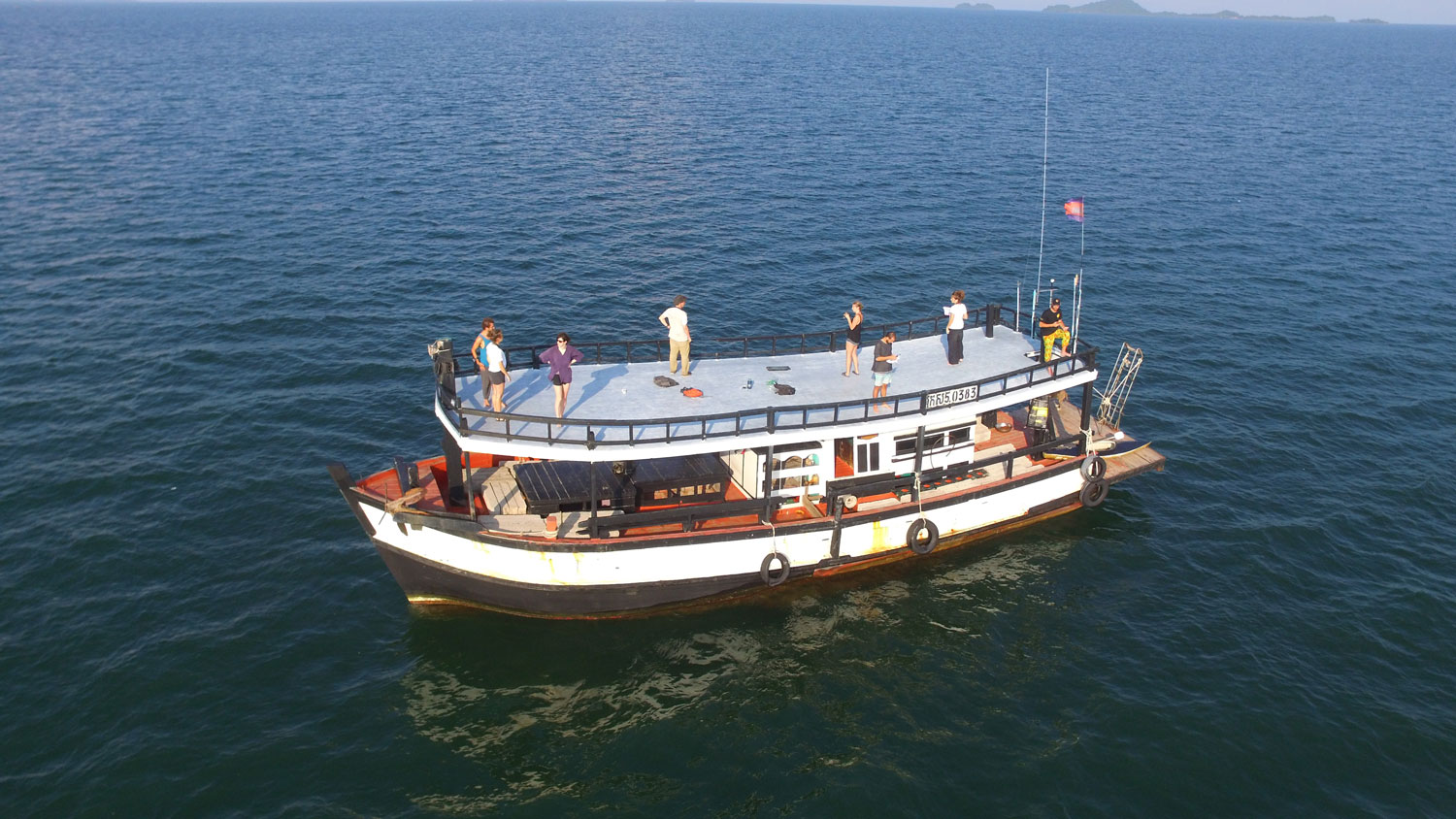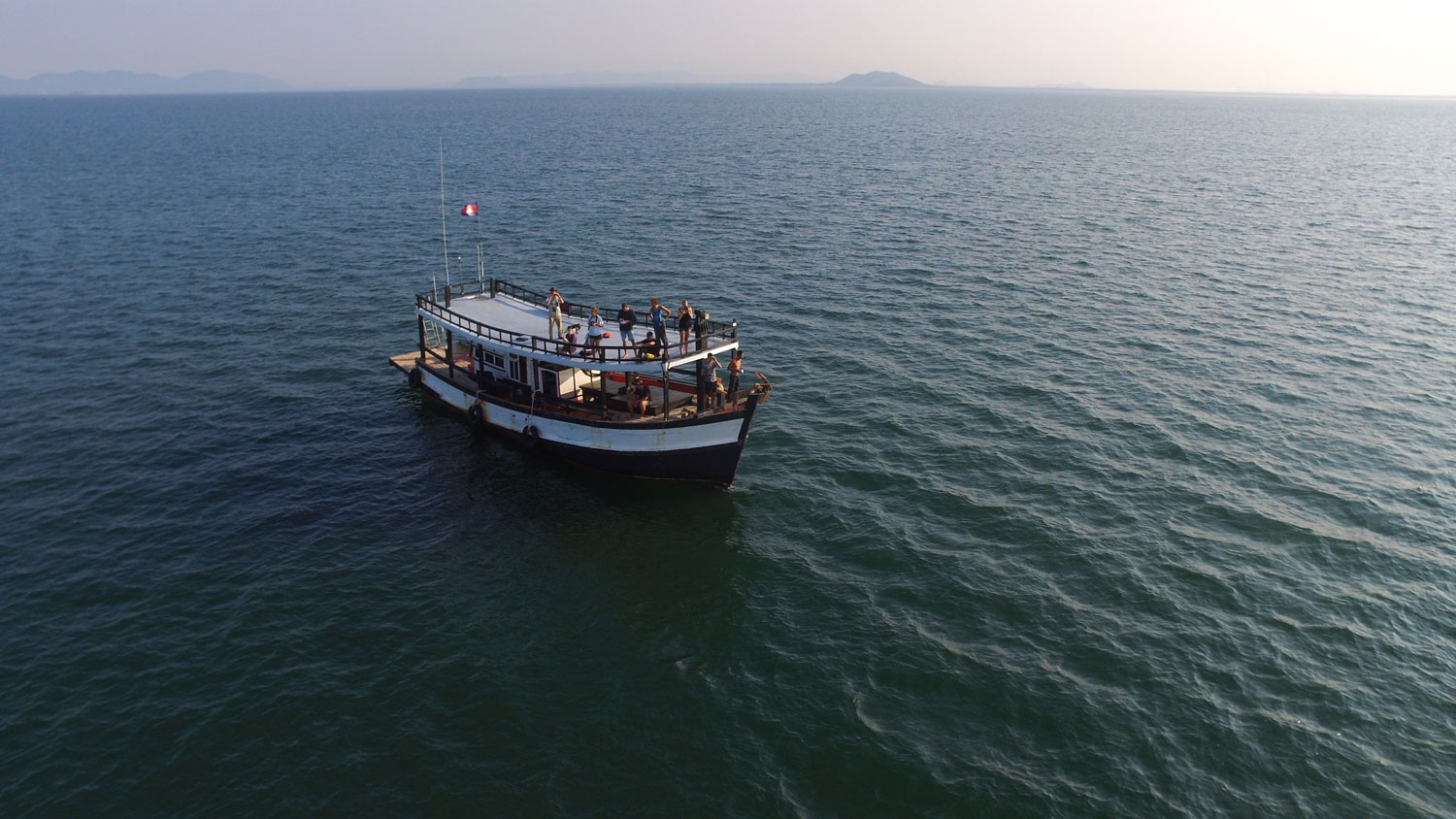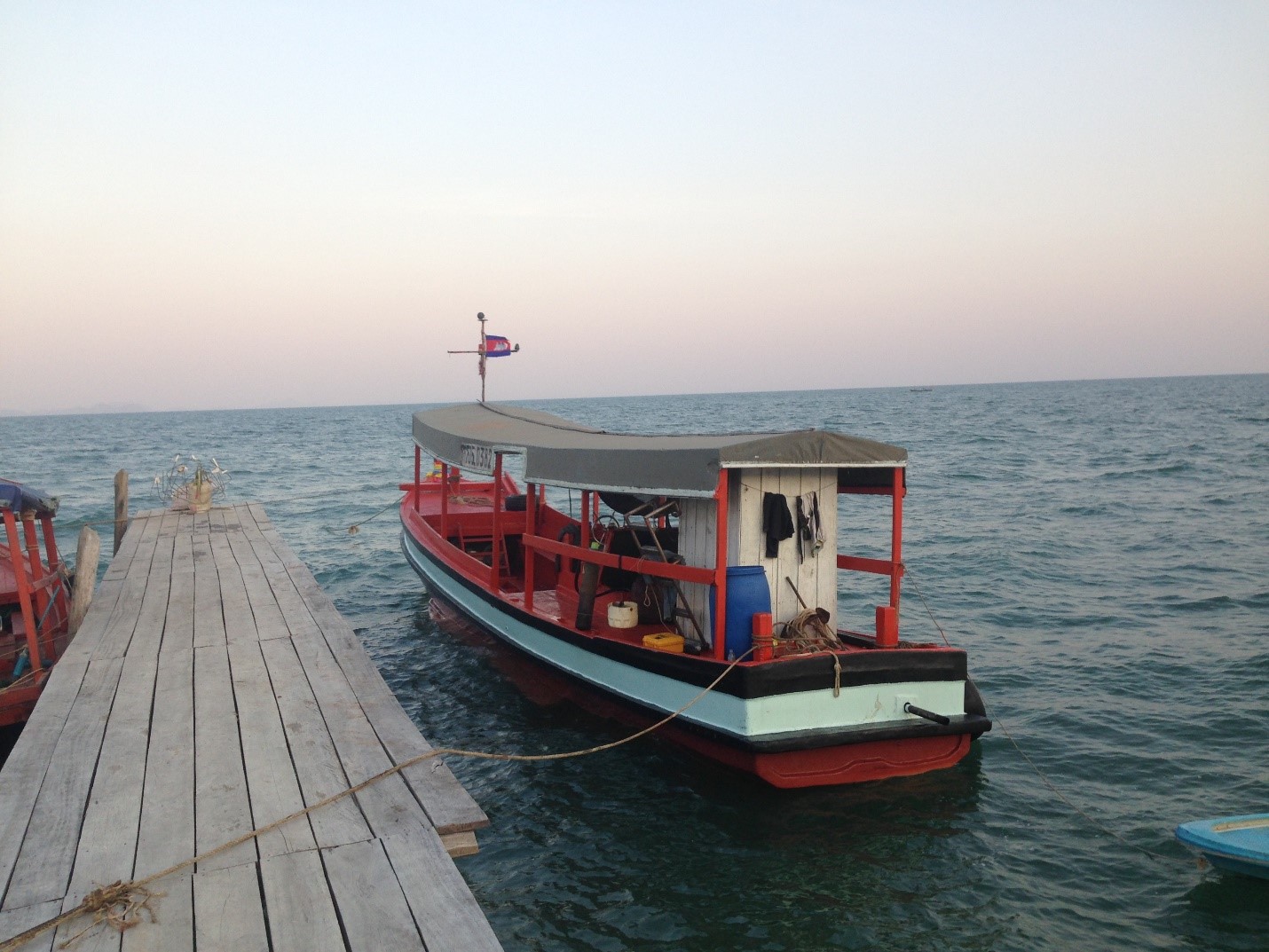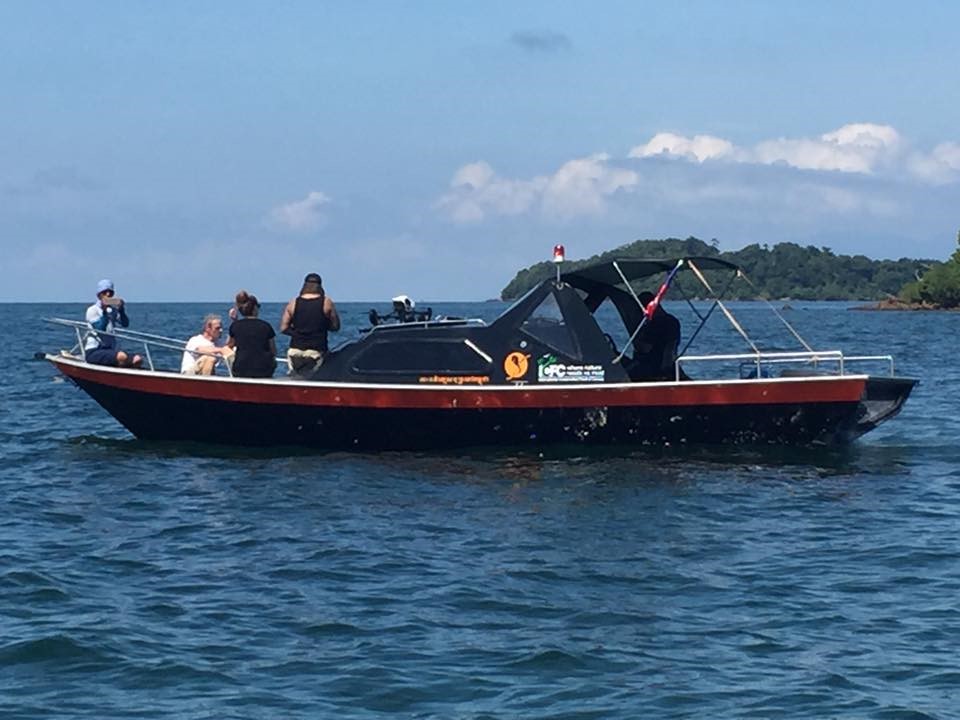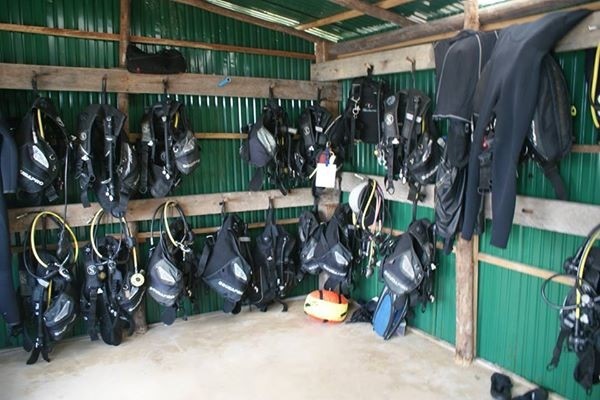This week we surveyed the second island on our expedition; Koh Ankrong or ‘ant island’. The waters around the island are too shallow for our boat to get us to the shoreline, so instead we have been anchoring up about 30 metres out and then jumping from the side of the boat and wading to land with all our equipment held above our heads. The island was littered with half a dozen bunkers, and numerous entrenchments, a stark reminder of the fight against the Khmer Rouge – a dark time so recent in the history of Cambodia. It was a good week for surveying, with the Lepidoptera team photographing the Bicolour Cupid and Blue Tiger and the Avifauna team getting shots of the Yellow Vented Bulbul.
Whilst island life is every bit the tropical paradise it sounds, the days surveying are long and hard, and present slightly less glamorous problems to overcome. The most immediate of which is how we are constantly wet all day long – this begins every morning with the wade ashore, continues in the hot and humid climate of the jungle, and for good measure the daily downpour helps too (it is rainy season here, which means you can expect anywhere between 20 minutes and 2 hours of tropical downpour everyday).
Late on wednesday evening, around 10pm, Paul Ferber, who owns and runs Marine Conservation Cambodia, had a tip off about illegal Vietnamese trawlers within the protected areas of his watch. Paul is hosting us on Koh Seh, and he works tirelessly around the clock to run volunteering projects for marine biology research and protection. Following the tip off, our team were invited on patrol with MCC at night, to search for illegal trawlers. We were on the top deck of the large patrol boat; all lights out, radio silence and so on – so as not to give away our position. We didn’t return until gone midnight, so everyone was straight to bed after.
On this occasion we did not encounter any trawlers, which was disappointing in a sense, but also reassuring to see how good a job MCC are doing. To give an idea of the dangerous nature of the work being carried out, Niet – the fisheries police officer pictured in some of our Facebook posts – always escorts these patrols armed with a loaded AK-47. Illegal trawling is big business in South East Asia, and shows the profound economic disparities in the region, given the risks some are willing to take for an income of between $50 and $150 per month. In the coming weeks, it seems likely that MCC will being interviewing some of these trawler operatives to try and understand from their perspective the justifications for this work. Bel, one of our Marine and Natural History Photographers, is set to take a year out of her studies to come and document the troubles in this area.
Work has also been cut out for our first aiders Katya, Tom and Bel. Amongst the injuries this week includes Matt standing on a sea urchin. Whilst filming with the GoPro and jumping from the boat to swim ashore, he landed on a rock bedded by a sea urchin, and the barb snapped off inside his foot. Unconventionally, he dug the barb out with a small needle, before carrying on for the day.
On Friday we finished surveying the Lepidoptera and Avifauna of Koh Ankrong, and whilst we will need to return later on in the expedition for orchids and pitcher plants photographing, Nang – one of our guides – decided it was time to celebrate Khmer style. Thus we found ourselves sat on the earthy ground inside a local fisherman’s shack on the island, tucking into fresh boiled crab, sustainably caught a matter of hours ago, and getting suitably drunk on rice wine. We paid 5 dollars per kilo of crabs, and the rice wine was on the house – happy days. Needless to say, scrambling on rocks along the rocky coastline and attempting to wade back to the boat was… interesting.
Evenings on the island are occupied by playing volleyball and football with the Khmer volunteers and staff – something we’ve still got a lot of improvement to make! We’ve also got involved with a bit of a make shift gym on the island – pull up bars tied to trees, metal dumbbells, and bar bells consisting of long planks of wood with concrete moulded on the ends! Membership costs come by way of trying to beat Nang and Bok at arm wrestles and push up challenges. After that, it is dark and cool enough to enjoy relaxed music playing from the speakers (powered by the generator which provides electricity to the island for a few hours every day), ice cold Angkor beers on the beach and being shown some basic fire poi moves! What has struck me most about island life is the lack of radio and tv, and so everything is a lot more easy going, and entertainment a lot more simple. Whilst this sounds cliche, it means days are a lot less stressed than at home, and we can enjoy focusing on our research.
Words by Sean Young

